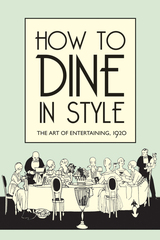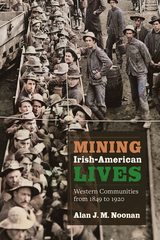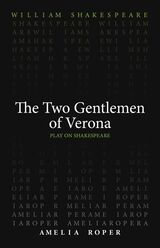2 books about 1920

How to Dine in Style
The Art of Entertaining, 1920
J. Rey
Bodleian Library Publishing, 2013
The 1920s marked the high point of refined dining, when silver tray–bearing white-gloved waiters circulated among guests and starched linens and candlelit tables were de rigueur. For the decadent class that came to prominence during the post-war period, achieving a reputation for throwing the most recherché dinner parties meant instant social success, and many an enterprising host or hostess sought advice in J. Rey’s The Whole Art of Dining.
By turns a collection of practical advice and a catalog of eccentricities, The Whole Art of Dining, republished by the Bodleian Library as How to Dine in Style, contained everything the would-be socialite needed to know in order to elevate food to high art, from tricks for putting together a proper French menu or throwing a garden party to practical tips on serving wines in the correct order and at the right temperature. Throughout the book are stories of astonishing excess, such as the search for ever-more-elaborate themes and venues, and the more daring of the book’s devotees might have been tempted to emulate efforts like those of the intrepid hostess whose mountaineering-themed dinner party had guests rappel to the rooftop of her Chicago home or American millionaire George A. Kessler, whose infamous “Gondola Party” flooded— for the first and only time—the central courtyard of the Savoy.
A captivating glimpse into the golden age of fine dining, this book will be consumed with interest by discerning diners and fans of the Roaring Twenties—and it may even inspire readers to try their hand at throwing a stylish soiree of their own.
[more]

Mining Irish-American Lives
Western Communities from 1849 to 1920
Alan J. M. Noonan
University Press of Colorado, 2022
Mining Irish-American Lives focuses on the importance and influence of the Irish within the mining frontier of the American West. Scholarship of the West has largely ignored the complicated lives of the Irish people in mining towns, whose life details are often kept to a bare minimum. This book uses individual stories and the histories of different communities—Randsburg, California; Virginia City, Nevada; Leadville, Colorado; Butte, Montana; Idaho’s Silver Valley; and the Comstock Lode, for example—to explore Irish and Irish-American lives.
Historian Alan J. M. Noonan uses a range of previously overlooked sources, including collections of emigrant letters, hospital logbooks, private detective reports, and internment records, to tell the stories of Irish men and women who emigrated to mining towns to search for opportunity. Noonan details the periods, the places, and the experiences over multiple generations in the late nineteenth and early twentieth centuries. He carefully examines their encounters with nativists, other ethnic groups, and mining companies to highlight the contested emergence of a hyphenated Irish-American identity.
Unearthing personal details along with the histories of different communities, the book investigates Irish immigrants and Irish-Americans through the prism of their own experiences, significantly enriching the history of the period.
Historian Alan J. M. Noonan uses a range of previously overlooked sources, including collections of emigrant letters, hospital logbooks, private detective reports, and internment records, to tell the stories of Irish men and women who emigrated to mining towns to search for opportunity. Noonan details the periods, the places, and the experiences over multiple generations in the late nineteenth and early twentieth centuries. He carefully examines their encounters with nativists, other ethnic groups, and mining companies to highlight the contested emergence of a hyphenated Irish-American identity.
Unearthing personal details along with the histories of different communities, the book investigates Irish immigrants and Irish-Americans through the prism of their own experiences, significantly enriching the history of the period.
[more]
READERS
Browse our collection.
PUBLISHERS
See BiblioVault's publisher services.
STUDENT SERVICES
Files for college accessibility offices.
UChicago Accessibility Resources
home | accessibility | search | about | contact us
BiblioVault ® 2001 - 2024
The University of Chicago Press









